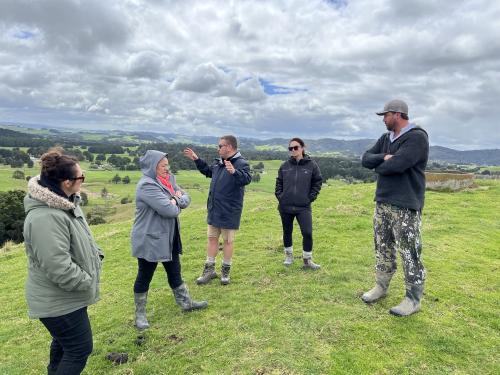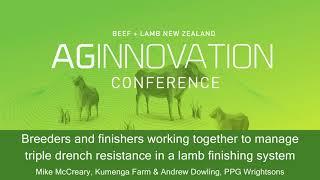Search results
Displaying 511 - 520 results of 1351
- Video… that have a significant impact on finishers farm system; weaning management, … We will present what has changed in the farm system, what we have learned and if we … introduce drench susceptible worms into the farm system. For more information on this …
- NewsThe importance of working on the business rather than in it and focusing on factors that can be controlled were amongst the key messages from chartered accountant and financial consultant Frazer …

- News… during an open and honest Korero held in the farm office on Banks Peninsula’s Willesden farm on a cool spring evening in late … Tairāwhiti Māori farming representatives visit Canterbury …
- Industry data… leading increase breeding cow numbers lifted farmers chose reduce weaner trading cattle … cattle weaner decreased 32 per cent southland farms bucked trend replenished weaner numbers … landuse change landuse change from sheep beef farms forestry continued 202223 remained high …
- Factsheet… 0800 beeflamb 0800 233 352 wwwbeeflambnzcom farmers farmers abortion ewes abortions ewes result … conceptus may reabsorbed may unnoticed until farmer realises high number dry ewes flock …
- News… in Tai Tokerau to strengthen ties with Māori farmers and whenua Māori. … Strengthening connections with Māori farmers …

- Factsheet… 120001 more variable depending training setup farm cadet receives practical training while completing range onfarm tasks shepherd junior assists daily tasks … stock operations one dedicated area larger farm farm advisor supervisor provides expert …
- Factsheet… 0800 beeflamb 0800 233 352 wwwbeeflambnzcom farmers farmers fact sheet november 2019 managing lice … new zealands animal welfare act 1999 health safety requirements around handling disposing …
- … and is 100% owned by NZ sheep and beef farmers – then consider working for us. … about NZ’s sheep and beef industry, and the farmers we work for. We’ve based our culture … with work or personal issues. Health and safety at work Our proactive health and safety …
- … zealand 3 lnzs vision sustainable profitable farmers thriving rural communities valued new … processors venison velvet roughly 1400 deer farmers 7 venison processing plants … required address very high risk public health safety sna solely because presence kānuka …
